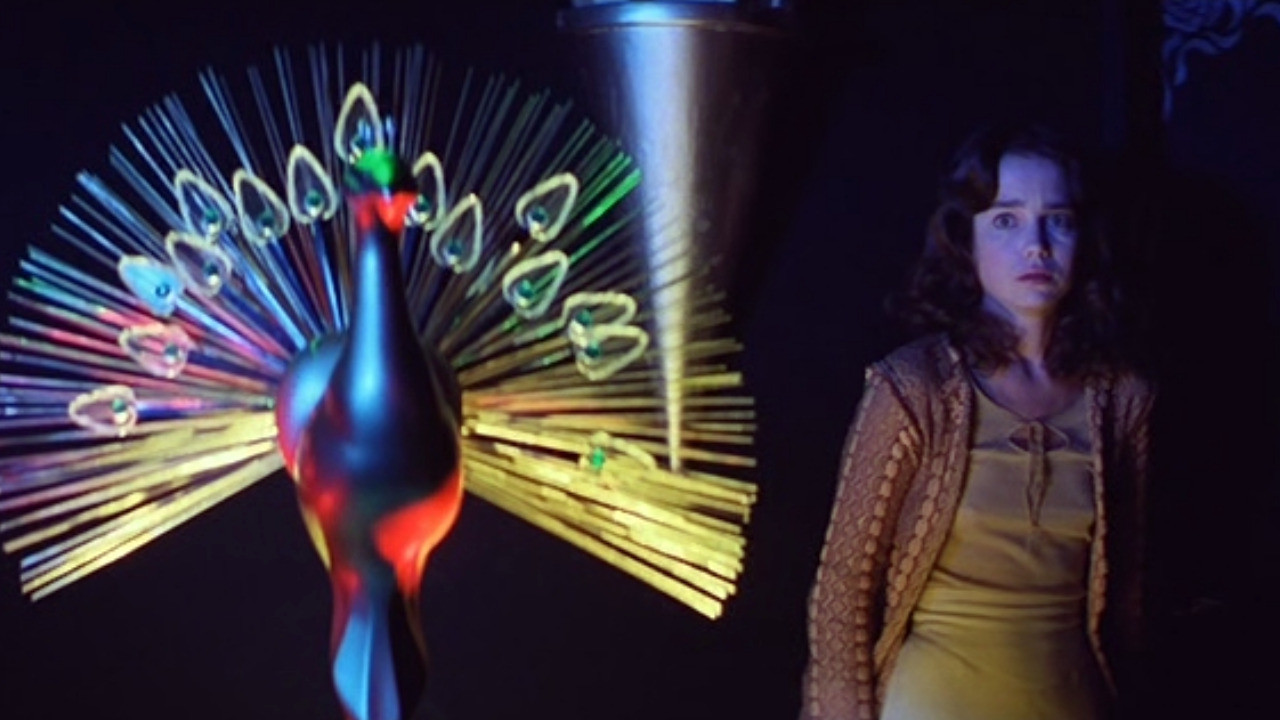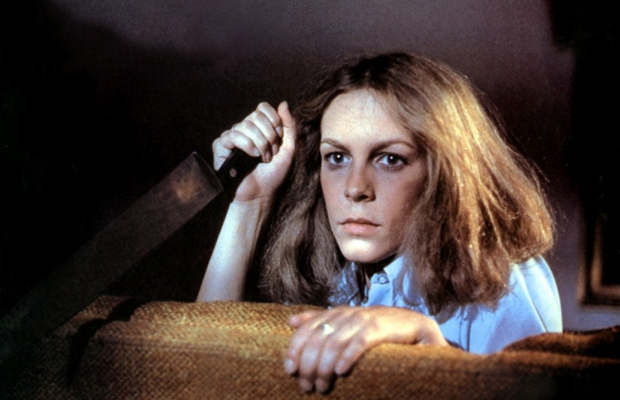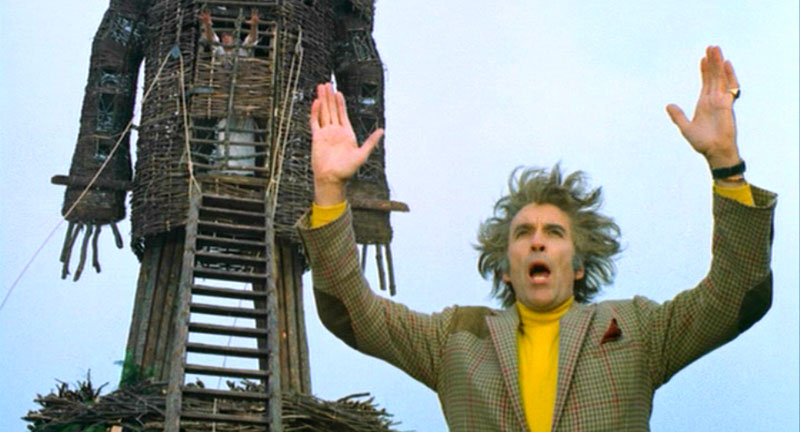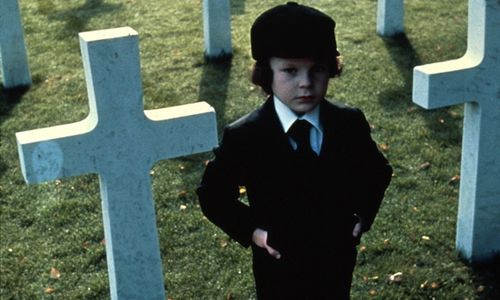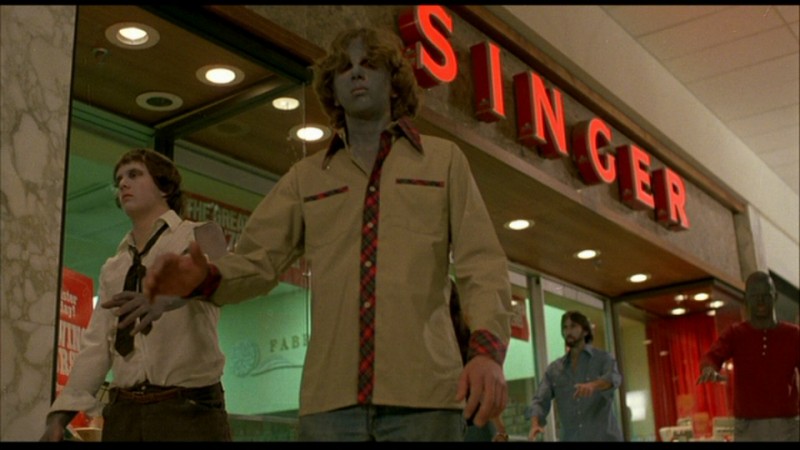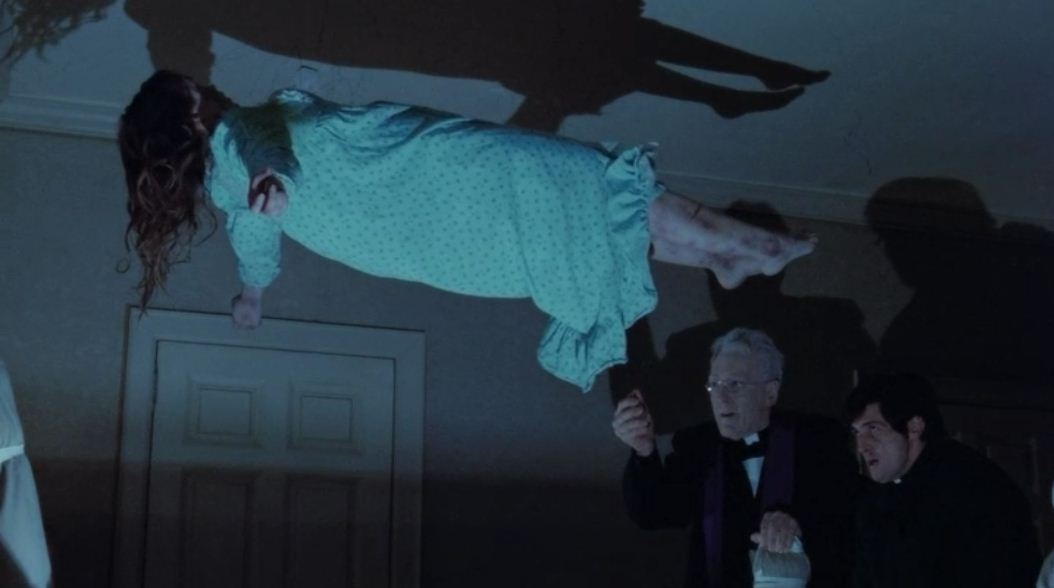8. Suspiria (1977)
This is another Dario Argento giallo classic. Argento never quite saw much success after this particular release but that in no way puts a tarnish on this masterpiece. Shot in 35mm Technicolor, this is one of the more visually engaging films on the list.
Suzy Bannion (Jessica Harper) arrives in the middle of a storm one evening at a prestigious ballet academy in Freiburg, Germany. The next day, she is informed that one of the school’s students was brutally murdered and an investigation will be taking place. The headmistress of the school seems warm enough but Suzy is suspicious of her aide, Miss Tanner. Soon after, several strange disappearances begin to take place. Suzy realizes that the ballet academy harbors a terrifying secret and she might be in danger.
This movie is not particularly scary but the cinematography and color palette create such a lush and vibrant film. The ballet academy pays homage to the art deco period and every frame captures this perfectly. Goblin does the score for the film, which gives it the perfect, brooding atmosphere that carries the film all the way through.
7. Halloween (1978)
John Carpenter is an absolute master at building suspense in horror movies. His creepy horror-synth score is recognizable by those who haven’t even seen the film. What makes Halloween so terrifying, and ultimately a very satisfying film, it how experiential it is. The viewer gets sucked in right away from the opening scene and knows from that point on, evil is lurking around the corner.
In 1963, six year-old Michael Myers kills his 15 year-old sister. He is institutionalized while his psychiatrist spends eight years trying to help him, then spends the next seven years trying to keep him locked away as he realizes how dangerous he is. Michael escapes the night before Halloween 15 years later with murder on his mind.
This is an atmospheric masterpiece. “Scream Queen” Jamie Lee Curtis earns her moniker as Laurie Strode. The intensity of Michael as this unstoppable evil only adds to the frightening atmosphere. This film is another blueprint for how to make a solid horror movie.
6. The Wicker Man (1973)
One of the more enigmatic 70s horror films to date, The Wicker Man is a fantastic look at pagan rituals and sexual repression. It builds an uneasy tension as the audience is just as confused as Sgt. Neil Howie (Edward Woodward). The atmosphere that this film builds on such a low budget is astounding. The only thing that is more shocking than the atmosphere is the climax at the end.
Sgt. Neil Howie is called to Summerisle, an isolated farming community, to investigate that disappearance of young girl named Rowan. Summerisle is known for their bountiful harvests, but the crops have failed to thrive this year. The townsfolk are less than cooperative with Sgt. Howie and insist that Rowan doesn’t even exist. Devout Sgt. Howie quickly realizes that the inhabitants of the town are pagan but has no idea what’s in store for him.
Christopher Lee is brilliant as Lord Summerisle. This was one of his definitive performances. The eerie costumes the residents wear for the Maypole celebration and creepy folksongs really keep the viewer guessing as to what’s going on. Rod Stewart’s girlfriend has an interesting performance in the film that he actually wanted removed from the film. It was not cut from the original print, much to his dismay.
5. The Omen (1976)
The Omen is one of those horror movies that even after repeated viewings, still frightens the daylights out of you. The implications of what little Damien is capable of, the horrible choice Gregory Peck is forced to make, and the sheer brutality and terror Damien’s victims experience are unshakable. The evil is palpable in a film like this.
Gregory Peck becomes the US Ambassador to England years after he and his wife adopt a young boy named Damien. Strange things tend to happen around Damien. During his fifth birthday celebration, his nanny hangs herself in front of the partygoers. Eventually, the family hires a new nanny who has an odd relationship to Damien. The most horrific scenes in the film don’t always happen when Damien is on screen but the idea that they are happening because of him and what he represents is terrifying.
Interestingly enough, a lot of horrible accidents plagued the film on and off the set. Nonetheless, it is a fantastic portrait of a devilish child and a wonderful performance by Peck. Movies about demonic possession were more common during this decade but are slowly making a comeback. Few come close to perfection as this one.
4. Jaws (1975)
There are many who will debate whether or not Jaws is a horror film in the strictest sense of the genre. There are scenes in Jaws that are downright horrific and the way Steven Spielberg creates an essential monster out of a great white shark definitely puts in the category of one of the better 1970s horror movies.
The small beach town of Amity relies on tourism to keep it afloat. The mayor and the town’s businessmen are unhappy to hear that Sheriff Brody (Roy Scheider) wants to close the beach for the summer after finding the a victim of the shark. Brody rethinks his decision but soon regrets it as a young boy is killed by the same shark. Brody assembles a crew that includes grad student Hooper (Richard Dreyfuss) to dispose of the shark.
The film is based on Peter Benchley’s novel “Jaws”. Jaws was one of the original summer blockbusters and ushered in a new model for how studios released films. A 3D version of Jaws was eventually released long before the recent craze of 3D films. “Bruce” the mechanical shark they used to create the film may not have looked so realistic but you have to take into consideration the era in which it was made. For those that are interested, you can still see Bruce at Universal Studios today.
3. Dawn of the Dead (1978)
On the heels of George Romero’s Night of the Living Dead, Dawn of the Dead is one of the greatest zombie horror films out there. It is also one of the most scathing commentaries on American consumerism to date. Night of the Living Dead was frightening, but stylistically, Dawn of the Dead is more intense, in color, and bloodier.
Four survivors of the zombie apocalypse seek shelter in an abandoned shopping mall after a SWAT evacuation goes awry. They have to secure the mall and fight off the zombies that are already there in order to survive just a while longer. Relationships are uneasy as time goes on and a roving gang of bikers invades the mall. Now, they must fight off the zombies and the bikers in the ultimate fight for survivor.
There are some light moments of humor in the film as is commonplace with many zombie movies but Romero knows when to pull it back just a bit. Jaded viewers may not consider it gruesome today, but for its time, Dawn of the Dead was considered to be pretty violent. The commentary on rampant consumerism make the film absolutely brilliant. Where else can you find mindless respite and safety from danger than at the mall?
2. Alien (1979)
Alien is one of the more terrifying sci-fi movies out there. It’s also one of the most well made of both genres. Ridley Scott pays such fine attention to detail in the film. There is the natural tension one feels of the unknown but also the added layer of the unknown aspects of space exploration. Those face suckers are enough to keep you awake for days on end.
A crew aboard the space vessel, Nostromo receive a distress call from a distant planet. The crew is awakened from their hypersleep when the ship lands on the planet. A team of three investigates an abandoned ship and finds a colony of eggs.
A parasite from one of the eggs attacks a crewmember and they bring him back aboard the ship. The parasite dies and the man appears to have recovered. The crew is unaware that they now have one unexpected guest on board. The special effects are amazing, if not nauseating.
The loneliness and isolation of space bears down on you as the alien makes it presence known. It’s one thing to be afraid of the dark, but this crew is enveloped in darkness. The pacing is about as perfect as it gets in any horror film as it takes it time in a painstaking way. Each small step builds up to the next until the climax. Visually, the film is quite engaging as it departs from the typical 70s slasher film.
1. The Exorcist (1973)
Anyone familiar with the film knows why it’s no surprise that The Exorcist weighs in at the top of this list. This is another film that has held up through the tests of time. Repeated viewings still yield the same shocks and terror. The imagery of Regan after she’s possessed is enough to scare the steeliest of viewers.
Regan’s mother is an actress who has taken a temporary residence in Washington DC. In the past, she has been a nice, upbeat little girl. Regan is beginning to change in appearance and behavior but her mother is unsure of why. A priest at nearby Georgetown feels he is shaky in his faith as his mother has a terminal illness.
An older ailing priest has premonitions of evil after returning from an archaeological dig in Iraq. Regan is increasing in her demonic behavior so they team up with an exorcist to rid young Regan of the demon.
The original cut was 140 minutes but the studio wanted Friedkin to cut it down. The original is dead solid perfect but the added footage to the most recent cut does have some creepy imagery that doesn’t detract from the film. The score, the cinematography, and the plot all come together to create the best horror films of the 1970s.
Author Bio: Edwanike Harbour has a Ph.D. in Counseling Psychology from the University of Wisconsin-Madison. She is an avid film buff and currently writes for Madison Film Forum. When she’s not in front of a movie screen, she is usually listening to indie rock and reading Don Delillo novels.
